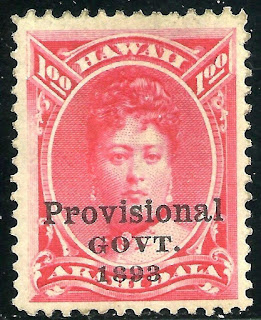Here are some events that happened on January 2nd. It could be an event or a person that died or was born on that day
1836 Born: Queen Emma of Hawaii (d. 1885)
Emma Kalanikaumakaʻamano Kaleleonālani Naʻea Rooke of Hawaiʻi (January 2, 1836 – April 25, 1885) was queen of Hawaii as the wife of King Kamehameha IV from 1856 to his death in 1863. She was later a candidate for the throne but King Kalākaua was elected instead.
In 1883, Emma suffered the first of several small strokes and died two years later on April 25, 1885 at the age of 49.
At first she was laid in state at her house; but Alexander Cartwright and a few of his friends moved the casket to Kawaiahaʻo Church, saying her house was not large enough for the funeral. This was evidently not popular with those in charge of the church, since it was Congregational; Queen Emma had been a supporter of the Anglican Mission, and was an Episcopalian. Queen Liliʻuokalani said it "...showed no regard for the sacredness of the place". However, for the funeral service, Bishop Alfred Willis of the English Church officiated in the Congregational church with his ritual. She was given a royal procession and was interred in the Royal Mausoleum of Hawaii known as Mauna ʻAla, next to her husband and son.
The Queen Emma Foundation was set up to provide continuous lease income for the hospital. Its landholding in the division known as the Queen Emma Land Company include the International Marketplace and Waikiki Town Center buildings. Some of the 40 year leases expire in 2010. The area known as Fort Kamehameha in World War II, the site of several coastal artillery batteries, was the site of her former beach-front estate. After annexation it was acquired by the U.S. federal government in 1907.
The Emalani festival, Eo e Emalani i Alakaʻi held in October on the island of Kauaʻi in Koke'e State Park celebrates an 1871 visit.
Stamps from Hawaii depicting Queen Emma of Hawaii
1861 Died: Frederick William IV of Prussia (b. 1795)
Frederick William IV (15 October 1795 – 2 January 1861), the eldest son and successor of Frederick William III of Prussia, reigned as King of Prussia from 7 June 1840 to his death. Also referred to as the "romanticist on the throne", he is best remembered for the many buildings he had constructed in Berlin and Potsdam, as well as for the completion of the Gothic Cologne Cathedral.
In politics, he was a conservative, who initially pursued a moderate policy of easing press censorship and reconciling with the Catholic population of the kingdom. During the German revolutions of 1848–1849, he at first accommodated the revolutionaries but rejected the title of Emperor of the Germans offered by the Frankfurt Parliament in 1849 as not the Parliament's to give and used military force to crush the revolutionaries throughout the German Confederation. From 1849 onward he converted Prussia into a constitutional monarchy and acquired the port of Wilhelmshaven in the Jade Treaty of 1853.
From 1857 to 1861, he suffered several strokes and was left incapacitated until his death. His brother (and heir-presumptive) Wilhelm served as regent after 1858 and then succeeded him as King.
Prussian stamps depicting Frederick William IV
1873 – Thérèse of Lisieux, French nun and saint (d. 1897)
Saint Thérèse of Lisieux (French: sainte Thérèse de Lisieux), born Marie Françoise-Thérèse Martin (2 January 1873 – 30 September 1897), also known as Saint Thérèse of the Child Jesus and the Holy Face, was a French Catholic Discalced Carmelite nun who is widely venerated in modern times. She is popularly known as "The Little Flower of Jesus", or simply "The Little Flower.”
Thérèse has been a highly influential model of sanctity for Catholics and for others because of the simplicity and practicality of her approach to the spiritual life. Together with Saint Francis of Assisi, she is one of the most popular saints in the history of the church. Pope Pius X called her "the greatest saint of modern times".
Thérèse felt an early call to religious life, and overcoming various obstacles, in 1888 at the early age of 15, she became a nun and joined two of her older sisters in the cloistered Carmelite community of Lisieux, Normandy (yet another sister, Céline, also later joined the order). After nine years as a Carmelite religious, having fulfilled various offices such as sacristan and assistant to the novice mistress, and having spent her last eighteen months in Carmel in a night of faith (a time when she is said to have felt Jesus was absent and when she even felt tormented by doubts about the existence of God), Thérèse died at the age of 24, from tuberculosis.
Her feast day in the General Roman Calendar was 3 October from 1927 until it was moved in 1969 to 1 October. Thérèse is well known throughout the world, with the Basilica of Lisieux being the second most popular place of pilgrimage in France after Lourdes.








No comments:
Post a Comment